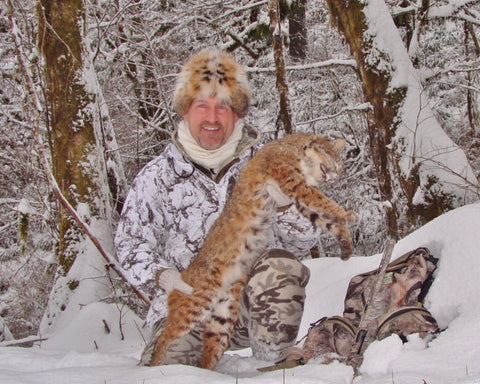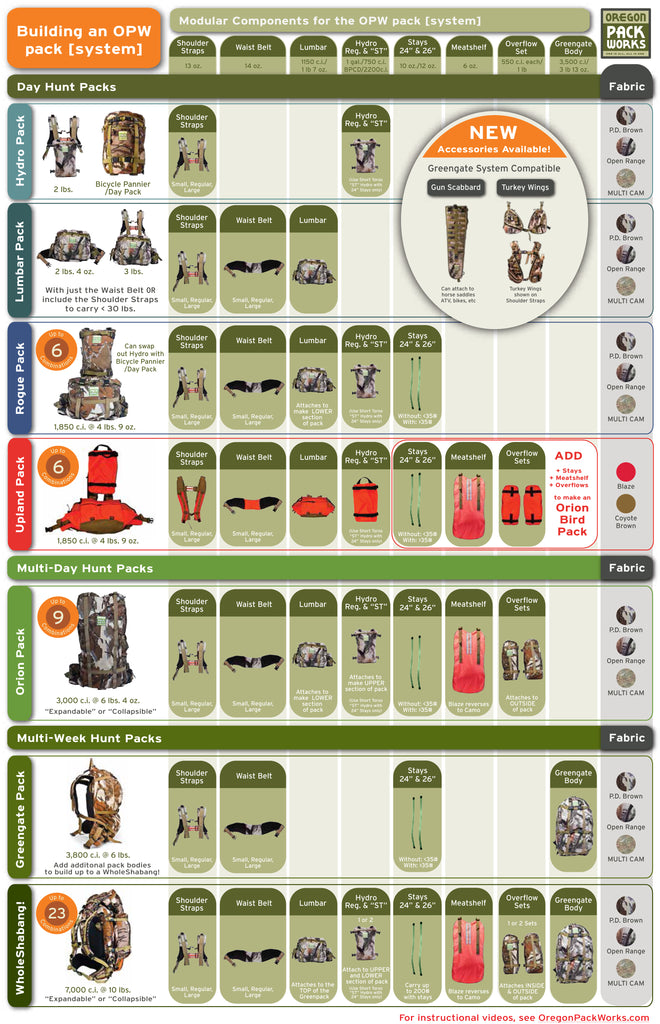Your Cart is Empty
Orders can take up to 3 weeks at times.
My 2015 Oregon/California predator hunting trip is fast approaching, which got me to thinking about last year’s exciting adventure.
Valentine’s Day holds special meaning for me. Love is in the air---the love of predator hunting, that is. It’s the time of year that kicks off my annual trip through California to spend some time with my bro and family in San Diego County, and chase sharp-toothed varmints. Before I leave, I like to concentrate my efforts on hunting bobcat close to home, to kind of kick start my adventure.
I wouldn’t say that snowfall in Oregon’s central coast range mountains is a rare event---it’s more like an infrequent occurrence. This year the timing was perfect. A week before my trip I was tracking cats in the white stuff. I ascended into one of my favorite bobcat strongholds and, within a half hour of delivering a series of woodpecker-in-distress calls, a mature brown-backed tom bob stood in stark contrast to the snow. I took him at 30 yards. A good start.

In years past, my trips through California consisted of hunting the same familiar areas---all on public land and all heavily used by folks of every outdoor endeavor. These areas always seemed to produce, but in the last couple years they seemed to grow a bit stale. This year I wanted to focus on scouting new areas, especially in the Sacramento and San Joaquin Valleys. On a whim, I took a random exit and headed for the mountains on the horizon. Surprisingly, it wasn't long before I found some public land with decent looking riparian habitat---it was already mid-morning.

I hiked my way from the upper hillier stretches towards the lower reaches of dense vegetation. I was amazed at the amount of predator sign visible along the edge of sage and willows---dozens of well used bobcat toilets dotted the entire area.

On my second set, I found a small opening amongst the chest high scrub, set up my e-caller and blended into the nearby brush having to remain standing to get any kind of visual on an approaching critter. Five minutes into the session, a tan figure darted past me at 10 yards towards the Foxpro, but stopped as it somehow noticed my head protruding over the sage. We locked eyes; he made a hard right turn and was almost swallowed up by the vegetation in the blink of an eye, but my shotgun blinked faster. The coyote was down. Unfortunately, the young dog had a touch of the mange, so I buried him where he lay to help stop the spread. I made several more sets but was mostly interested in scouting for future sets during more opportune times.

I continued to the eastern end of the area---a drought-stricken “swampy” bottom-land thick with grass, dense willows, and scrub interspersed throughout. Matted game trails snaking through the grass read like a book to the searching eye as small prints of spotted cats left their mark in sandy patches. Further investigation turned up more “toilets” that looked like unattended litter boxes in the civilized world. I set up at the junction of four cat trails and, once again, remained standing next to a gray snag. As the e-caller was belting out a rodent distress, accompanied by my small motion decoy, I tried to imitate a sitting crow with my open-reed call. Twenty minutes into the set I caught movement on the trail furthest away and to my right. A beautiful gray tom emerged from the willow thicket and was putting the stalk on my decoy. If I hadn’t been standing I would have never noticed his low, slow and fluid movements. He paused 10 yards from my call/decoy and raised up to get a better look. At 30 yards I saw my opening and the bob took a load of Heavy Shot from my scatter-gun. My day ended on a high note and I couldn’t wait to explore this new area further on my way back to Oregon, but it was time to continue south.

In southern California, the drought seemed to take a particularly hard toll on the landscape. It was drier and hotter than I ever remembered. I decided to concentrate on finding water on the public land I was targeting. I figured this was where the critters would congregate as well. It seemed to pay off. North of L.A., I was tucked under a juniper on the side of a hill calling into a small canyon infested with scrub, cacti and boulders. It was a half hour before darkness set upon me. I was squealing away my best imitation of a dying cottontail on my open reed call when a critter flashed past me from behind and not 5 feet on my right side. As it flew down the hill into the draw my shotgun was coming up. The swift and agile gray fox never stopped running as it’s feet seemingly never touched the ground, but the tungsten shot caught up to him just as he disappeared around the last obstacle. I didn’t know I hit him until I rounded that corner. He was a beautiful male.

The next morning I was east of San Diego sitting on a pile of huge boulders. I had four crows fly into my set-up from a long way out, cackling the whole way in. Not far behind them, a single 3-legged coyote was making a beeline for my perch. My .223 was up and ready, the crosshairs floating on the front chest of the zig-zagging yote at just over 100 yards. Next thing I see is the hind end of the 3-legged yote zig-zagging away from me at just over 100 yards, and out of my life. I guess he deserved a little luck in his life. I made several more sets throughout the hot day with no luck. I knew there were critters around by the large amounts of tracks and scat, but I knew the night was their preferred time of activity. I wasn’t set up for night hunting on this trip, but next year was going to be a different story.

The remainder of the week was spent looking over new areas I had marked on my maps for next years’ hunts, but I did manage to take a couple more gray fox and missed an “easy” shot at another. One young male gray “flew” off the side of the opposite canyon at such a great distance I thought it was a small squirrel (I was imitating a squirrel in distress). I was on the side of such a steep and rocky canyon I was able to watch that fox literally sprint down the opposite side of the canyon, over the harshest and most uneven terrain, as if it were flat even ground and end up sitting 15 feet in front of me in mere seconds. Being the only fox that can and will regularly climb trees, I can see why their agility is legendary---I sure respect those little grays, and they are a hoot to hunt.

On the trip home, I made it back to my Sacramento Valley honey hole, but the skies opened up and the wind let loose a storm that made the national news. Of course that didn’t stop me from trying. I made one pass through the area and saw a wet and angry looking bobcat slinking away from my setup, way out of shotgun range (shotgun area only). All in all, it was another memorable and satisfying adventure. Can’t wait till next year.
Comments will be approved before showing up.


A. Chest
B. Sleeve
C. Waist
D. Inseam